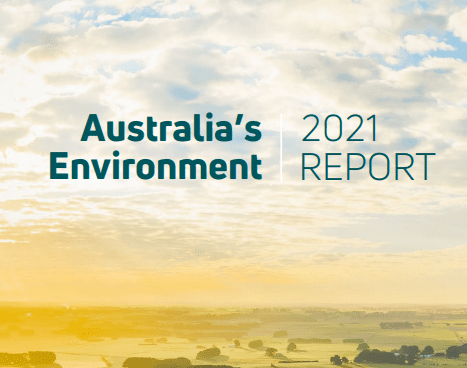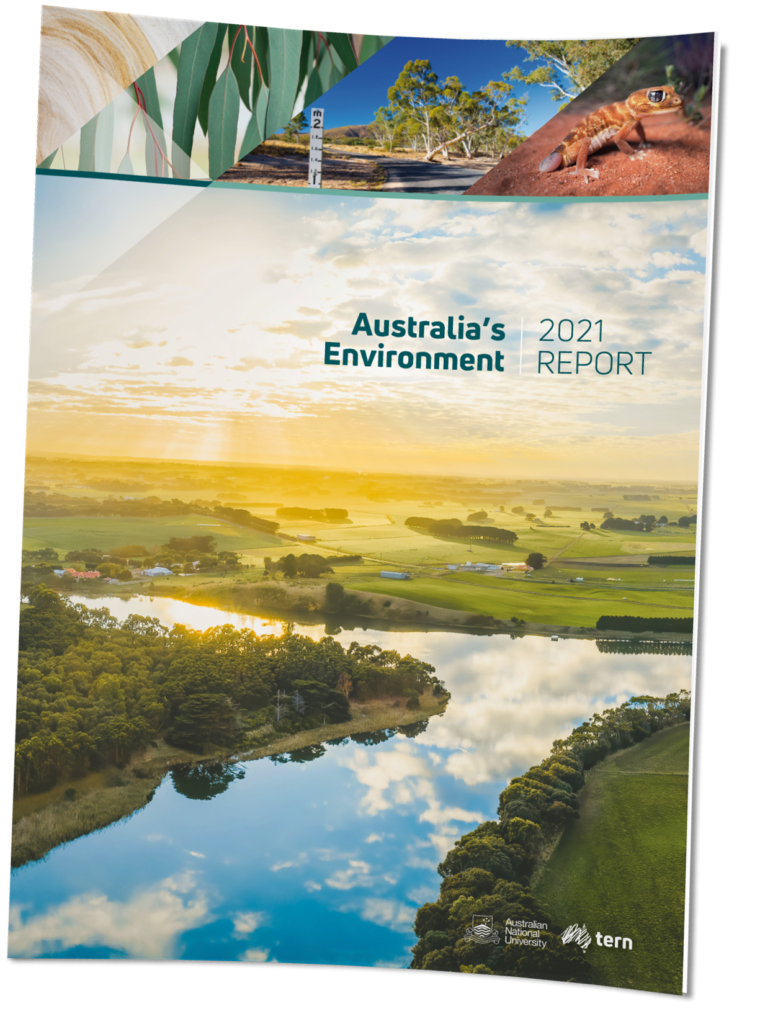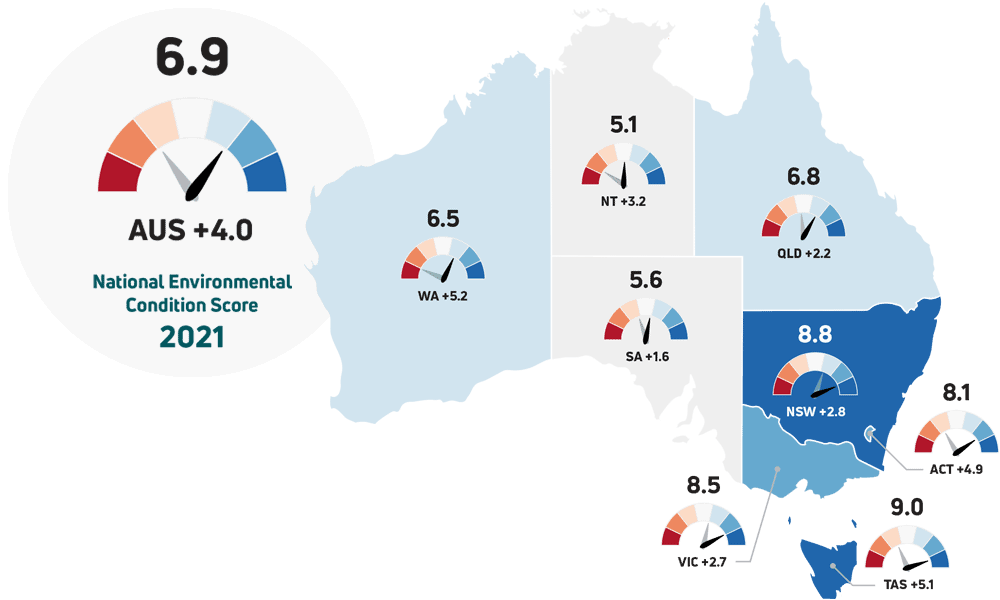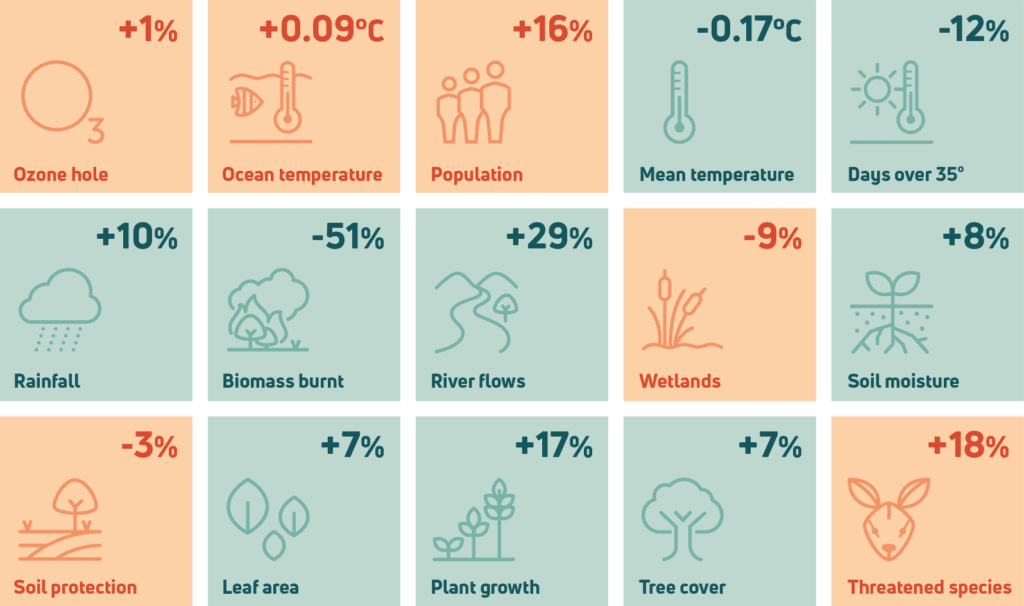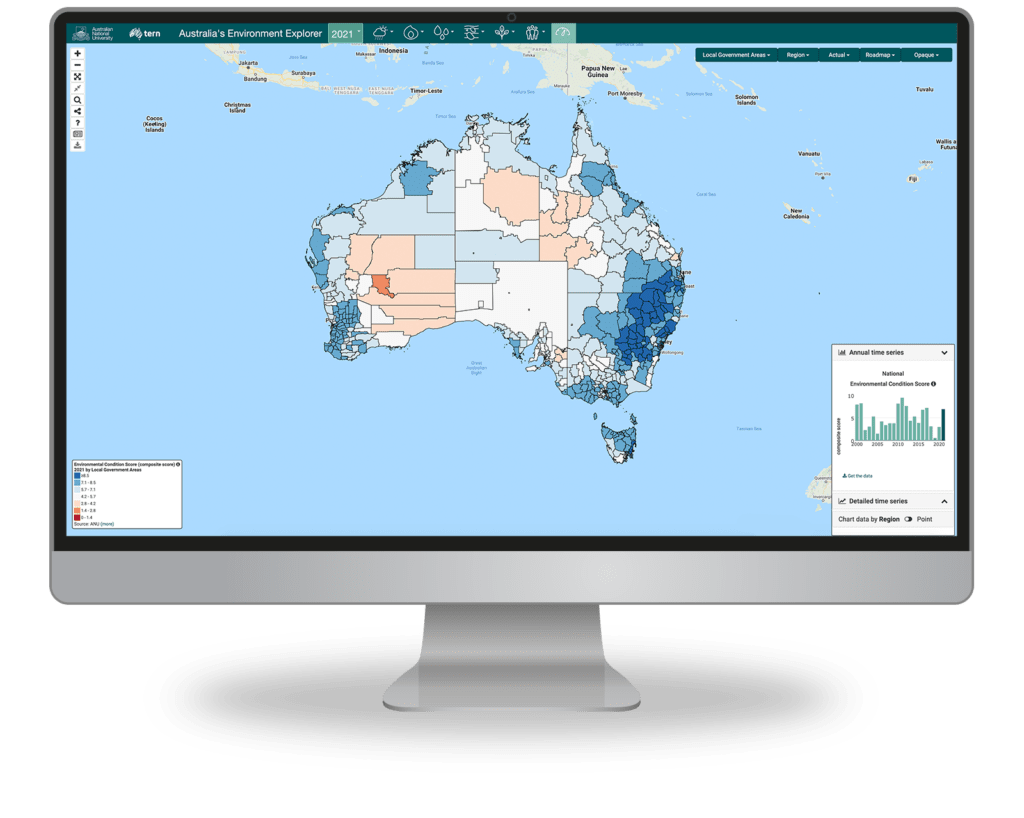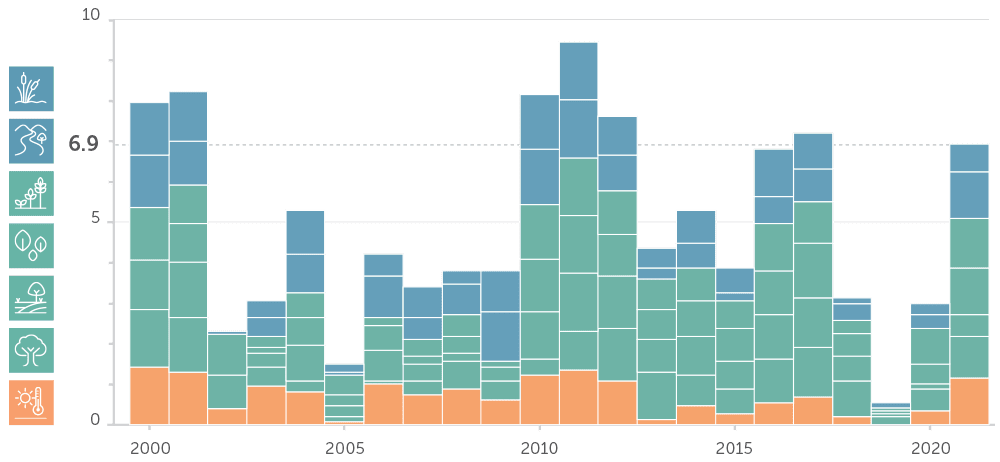Lower temperatures and good rainfall, in part due to La Niña conditions, have supported a strong recovery for Australia’s environment following record hot temperatures, drought and a catastrophic bushfire season two years ago, according to the annual Australia’s Environment Report.
Produced each calendar year since 2015 by the Australian National University (ANU) and TERN, the report on the state of Australia’s Environment provides summaries of key events, environmental conditions and change during 2021.
It documents the environment’s resilience to the extreme drought, heat and damage to our natural capital that was reported in 2019 and 2020.
Nationally, Australia’s environmental condition score increased by 3.7 points in 2021, from an extremely low 3.2 out of 10 in 2020, to an improved score of 6.9 in 2021.
Report cards can be downloaded for any administrative or geographic region of Australia, including states, territories, local government areas, catchments, electorates and bioregions, for example.
Australia’s Environmental Condition Score (ECS) by State and Territory and change from the previous year (credit: http://www.ausenv.online)
Good rainfall and fewer heatwaves led to greener pastures for Australia’s environment in 2021
ANU’s Professor Albert van Dijk leads the work and says that above average rainfall and lower temperatures not seen for eight years have contributed to a strong recovery of Australia’s environment in 2021.
“We’ve seen strong signs of recovery in all states and territories thanks to low fire activity, eased drought conditions and good rainfall which replenished parched soils, improved vegetation and led to better growing conditions.
The extraordinary rainfall in recent weeks in parts of New South Wales and Queensland added water to catchments, rivers and dams that had already replenished in 2021. That contributed to the dramatic floods we have seen.”
Prof. Albert van Dijk, Australian National University
The report also documents an almost two percent reduction in Australia’s carbon emissions in 2021, primarily due to the COVID-19 pandemic. It also highlights the nation’s sixth warmest year on record.
“Record warm July temperatures were measured in some areas in inland Australia, but otherwise not many records were broken and that’s good to see for a change.
The number of days exceeding 35 degrees Celsius was the lowest since 2011, so it was generally less hot last year.”
Prof. Albert van Dijk, Australian National University
Indicators of Australia’s environment in 2021 compared with the average for 2000-2020. Similar to national economic indicators, they provide a summary but also hide regional variations, complex interactions and long-term context (credit: http://www.ausenv.online)
Long-term data on the state of our environment
The Australia’s Environment report and its data explorer are created by ANU by analysing vast amounts of long-term measurements from satellites and on-ground stations using algorithms and prediction models on a supercomputer, including many delivered by NCRIS-enabled projects, including TERN.
“Of particular importance to our analysis are long-term time-series data, including many delivered by TERN. These datasets allow patterns of change in Australia’s ecosystems to be assessed, which is critical to understanding and managing our environment.
The algorithms and models use the open data to summarise 15 key environmental indicators. They include indicators of weather, water availability and soil and vegetation condition.
From these 15 indicators, seven were used to calculate overall Environmental Condition Scores for any region in Australia and the nation.”
Prof. Albert van Dijk, Australian National University
Environmental Condition Score (ECS) (credit: http://www.ausenv.online)
The state of Australia’s biodiversity has much room for improvement
Unfortunately, new data also show that some aspects of Australia’s environment did not improve in 2021.
Although vegetation recovered from the drought and bushfires of previous years, Australia’s biodiversity continued to decline in 2021.
Twelve species were declared extinct in 2021 and another 34 species were added to Australia’s Threatened Species List, including plants, birds, frogs, fish and more. Twenty-five per cent of those newly listed species are birds native to Kangaroo Island (KI), which suffered immensely during the 2019-20 KI summer bushfires.
The new findings on Australia’s biodiversity are not only a wake-up call for threatened species conservation but also another reminder of the paramount importance of long-term environmental monitoring data.
Without the thousands of data sets gathered by citizen scientists, government, conservation and research groups and made available by TERN and its Threatened Species Index (TSX), Australia would be completely in the dark and unable to track the changes in abundance of its threatened and near-threatened species.


